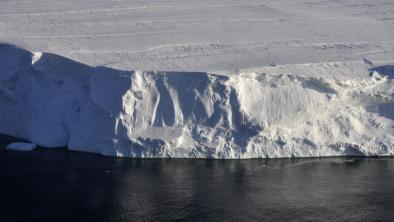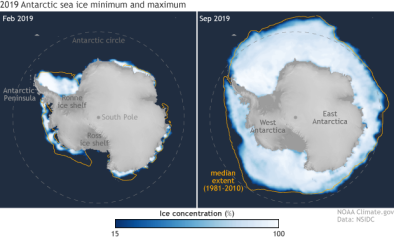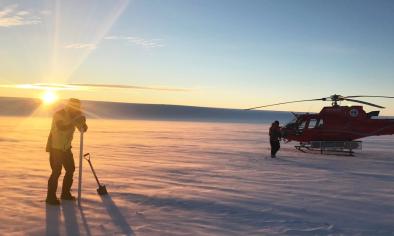Science Source
Rapid submarine ice melting in the grounding zones of ice shelves in West Antarctica
The ice is being lost at such a rate that the glacier feeding the ice shelf cannot replenish it quickly enough. I was really struck by how high the loss is.
Ala Khazendar, study lead-author and researcher at NASA’s Jet Propulsion Laboratory
- States that enhanced submarine ice-shelf melting strongly controls ice loss in the Amundsen Sea embayment (ASE) of West Antarctica, but its magnitude is not well known in the critical grounding zones of the ASE’s major glaciers
- Directly quantifies bottom ice losses along tens of kilometres with airborne radar sounding of the Dotson and Crosson ice shelves, which buttress the rapidly changing Smith, Pope and Kohler glaciers
- Finds that melting in the grounding zones is much higher than steady-state levels, removing 300–490 m of solid ice between 2002 and 2009 beneath the retreating Smith Glacier
- Finds that the vigorous, unbalanced melting supports the hypothesis that a significant increase in ocean heat influx into ASE sub-ice-shelf cavities took place in the mid-2000s
- Finds that the synchronous but diverse evolutions of these glaciers illustrate how combinations of oceanography and topography modulate rapid submarine melting to hasten mass loss and glacier retreat from West Antarctica
Related Content
Headline

Jan 29, 2020 | BBC News
Journey to the 'doomsday glacier'
Headline

Nov 22, 2019 | NOAA Climate.gov
Understanding climate: Antarctic sea ice extent
Headline

Mar 26, 2019 | The Guardian
Australian researchers find huge lakes beneath largest east Antarctic glacier
Science Source
| Geophysical Research Letters
Mass Loss of Totten and Moscow University Glaciers, East Antarctica, Using Regionally Optimized GRACE Mascons
Yara Mohajerani, Isabella Velicogna, Eric Rignot


